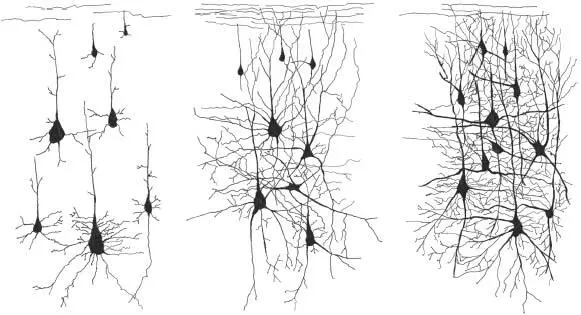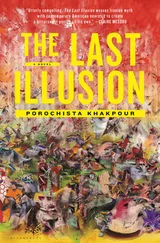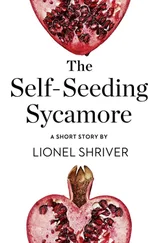Bruce Hood - The Self Illusion
Здесь есть возможность читать онлайн «Bruce Hood - The Self Illusion» весь текст электронной книги совершенно бесплатно (целиком полную версию без сокращений). В некоторых случаях можно слушать аудио, скачать через торрент в формате fb2 и присутствует краткое содержание. ISBN: , Издательство: Constable & Robinson, Жанр: Старинная литература, на английском языке. Описание произведения, (предисловие) а так же отзывы посетителей доступны на портале библиотеки ЛибКат.
- Название:The Self Illusion
- Автор:
- Издательство:Constable & Robinson
- Жанр:
- Год:неизвестен
- ISBN:9781780331379
- Рейтинг книги:5 / 5. Голосов: 1
-
Избранное:Добавить в избранное
- Отзывы:
-
Ваша оценка:
- 100
- 1
- 2
- 3
- 4
- 5
The Self Illusion: краткое содержание, описание и аннотация
Предлагаем к чтению аннотацию, описание, краткое содержание или предисловие (зависит от того, что написал сам автор книги «The Self Illusion»). Если вы не нашли необходимую информацию о книге — напишите в комментариях, мы постараемся отыскать её.
The Self Illusion — читать онлайн бесплатно полную книгу (весь текст) целиком
Ниже представлен текст книги, разбитый по страницам. Система сохранения места последней прочитанной страницы, позволяет с удобством читать онлайн бесплатно книгу «The Self Illusion», без необходимости каждый раз заново искать на чём Вы остановились. Поставьте закладку, и сможете в любой момент перейти на страницу, на которой закончили чтение.
Интервал:
Закладка:
Are we like a factory made up of lots of autonomous little workers inside our heads carrying out all the various tasks and functions that humans can achieve? To some extent we are, in that many of the subdivisions can operate independently. But there is not a worker army of homunculi any more than there is a chief executive in charge. Rather, our minds are a multitude of different processes and decisions that are often in conflict with each other, which often can occur below our level consciousness. This is why we will need to abandon the notion of internal individuals, which is inadequate to explain the complexity of our brain, and ultimately discard the notion that there is an inner self.
Mapping the Mind Machine
If the brain is a complex machine organized into different processing subdivisions, where does this organization come from? Who sets up all the domino patterns in the first place? This question is one of the major battlegrounds in neuroscience. To what extent are we preconfigured for the world by our genes and to what extent does that configuration emerge through our interaction with the world? It’s the old ‘nature versus nurture’ issue but at the basic biological level. It all depends on what aspect of being human you are considering but even the simplest features appear to combine biology with experience.
It is quite clear that we are born with many basic neural patterns in place. Many sensory and motor areas are well specified at birth even though they have yet to reach their full adult potential. 15But babies are not just passive sponges soaking up sensation from their environment – they can also act upon the world. For example, each human newborn is equipped with a repertoire of behaviours known as reflexes that play some vital role in development. Consider the rooting reflex, triggered by gently stroking the cheek of a newborn, which makes the baby turn their head and pucker up their lips in anticipation of a tasty nipple. If a nipple (or at least something of a similar shape) is touched to the baby’s lips, this then triggers a sucking reflex. You might think that the baby has decided to feed, but the truth is that these behaviours are completely involuntary and automatic and do not require any thinking. In fact, you do not need a very sophisticated brain to execute them. Anencephalic babies, born without any cortex, can still execute sucking reflexes because these behaviours are supported by primitive neural circuitry that lies beneath the cortex. But anencephalic babies are never destined to experience what it is to be human. They do not learn. They do not get bored. 16They simply respond. They will never develop a sense of their own self. Most die within days.
In contrast to the unfortunate babies born with brain damage, healthy infants are equipped with a brain that is designed to learn about its environment and this learning starts very early. We now know that the unborn baby can learn the sound of their mother’s voice, develop a preference for the food she eats while pregnant and even remember the theme tune to the TV soap operas she watches while waiting for the big day to arrive. 17All of this proves that the brain is already functioning and storing patterns of connections that represent the outside world. This is one reason why separating the relative influence of nature from nurture is always going to be hard and contentious. When do you start measuring? From conception or from birth?
Neuroscientists argue about how much of the adult brain structure is already evident in the infant, but it is quite clear that even if much of the blueprint for brain architecture has been passed on in the genetic code we inherit, there is still considerable scope for making amendments and building extensions to the original plan. This is where the environment shapes the brain by sculpting the matrix of neuronal connectivity that generates our minds.
Plastic Brains
I once bought a ‘Grow Your Own Brain’ gimmick toy, which was basically a compressed tiny plastic foam brain that you put in water, and it eventually expands to a much greater size. It’s amusing but not really a useful teaching aid. It is true that as babies grow their brains expand, but they are not simply swelling. The human newborn baby’s brain weighs about a quarter of the weight of an adult brain but within the first year more than half of the difference in weight is made up. What may surprise you is that this weight change is not because the brain is growing more neurons. In fact, newborn babies have almost their full complement of neurons that will remain with them throughout the rest of their lives. Rather most of that weight change is due the rapid expansion of communications between the neurons. 18
As you can see in Figure 5, a diagram of the cortex taken from newborns through to fifteen months old, the human brain undergoes a massive explosion in connectivity between neurons during infancy. 19For example, during peak activity, the rat pup brain is generating neuronal connections at the rate of 250,000 every second. That’s fifteen million connections every minute. We do not know how fast the process occurs in humans. If anything it may well be even faster.

Figure 5: Illustration of neurons’ increasing connectivity during development
These structural changes reflect the way that biological processes interact with the world to shape the brain to fit into its environment. Two complementary processes create this sculpting. 20First, genetic commands tell the neurons to start growing more and more connections. This creates an initial over-production of connectivity between the neurons. That’s why the diagram looks like the underground root system of weeds growing in your garden. Second, this bout of over-production is then followed by a period of pruning, where connections are lost between neurons. 21Around four out of every ten connections are lost with about 100,000 lost every second during the peak rate. This loss of connectivity is particularly interesting and at first surprising. Why would nature put in all the effort to build bridges between neurons only to knock them down almost equally as fast at a later date?
It turns out that the over-production and subsequent cull of connections may be a cunning strategy to shape the brain to its environment. A massive connectivity means that the brain is wired up for every potential pattern of activation that it may encounter from experience. But remember, only neurons that fire together, wire together. When neurons are not reciprocally activated, nature prunes their connections through inactivity. Returning to the metaphor of our extended neighbourhood, ‘If you don’t return my call, I am not going to bother contacting you later.’ Or for those of you familiar with social networking such as Facebook or Twitter, then it’s the case of ‘un-following’ followers who do not follow you back.
Reciprocal communication enables experience to change the brain’s architecture. We know this from animal research in which the effects of early environments have been shown to influence the connectivity of the brain. For example, if you raise rat pups in isolation without much to see or do, their brains are lighter and have few cortical connections compared to the brains of pups raised in an enriched environment where there are lots of other rats with which to play. Nobel Prize winners David Hubel and Torsten Wiesel found that the activity of cortical neurons in the visual area was impaired in cats and monkeys raised in deprived visual environments during early development. Moreover, specific types of visual deprivation produced selective impairments. For example, animals raised in a stroboscopic world had relatively normal vision for objects but could not see smooth movement in the same way that you cannot see continuous motion in a bad 1970s disco when the strobe light is on. One unfortunate woman who acquired damage to this part of her visual brain late in life described how difficult it was for her to cross the road because she could not judge the speed of approaching cars. When she poured a cup of tea, it looked like a series of snapshots of still photographs with the cup empty, half-full and then overflowing. 22
Читать дальшеИнтервал:
Закладка:
Похожие книги на «The Self Illusion»
Представляем Вашему вниманию похожие книги на «The Self Illusion» списком для выбора. Мы отобрали схожую по названию и смыслу литературу в надежде предоставить читателям больше вариантов отыскать новые, интересные, ещё непрочитанные произведения.
Обсуждение, отзывы о книге «The Self Illusion» и просто собственные мнения читателей. Оставьте ваши комментарии, напишите, что Вы думаете о произведении, его смысле или главных героях. Укажите что конкретно понравилось, а что нет, и почему Вы так считаете.












